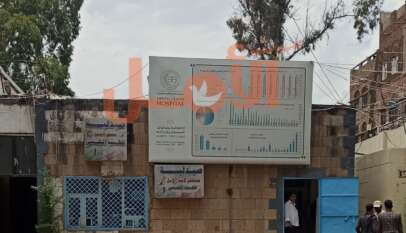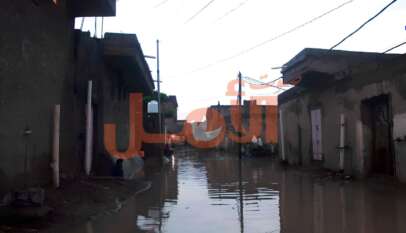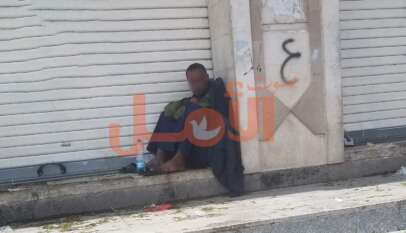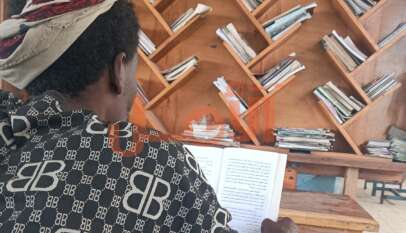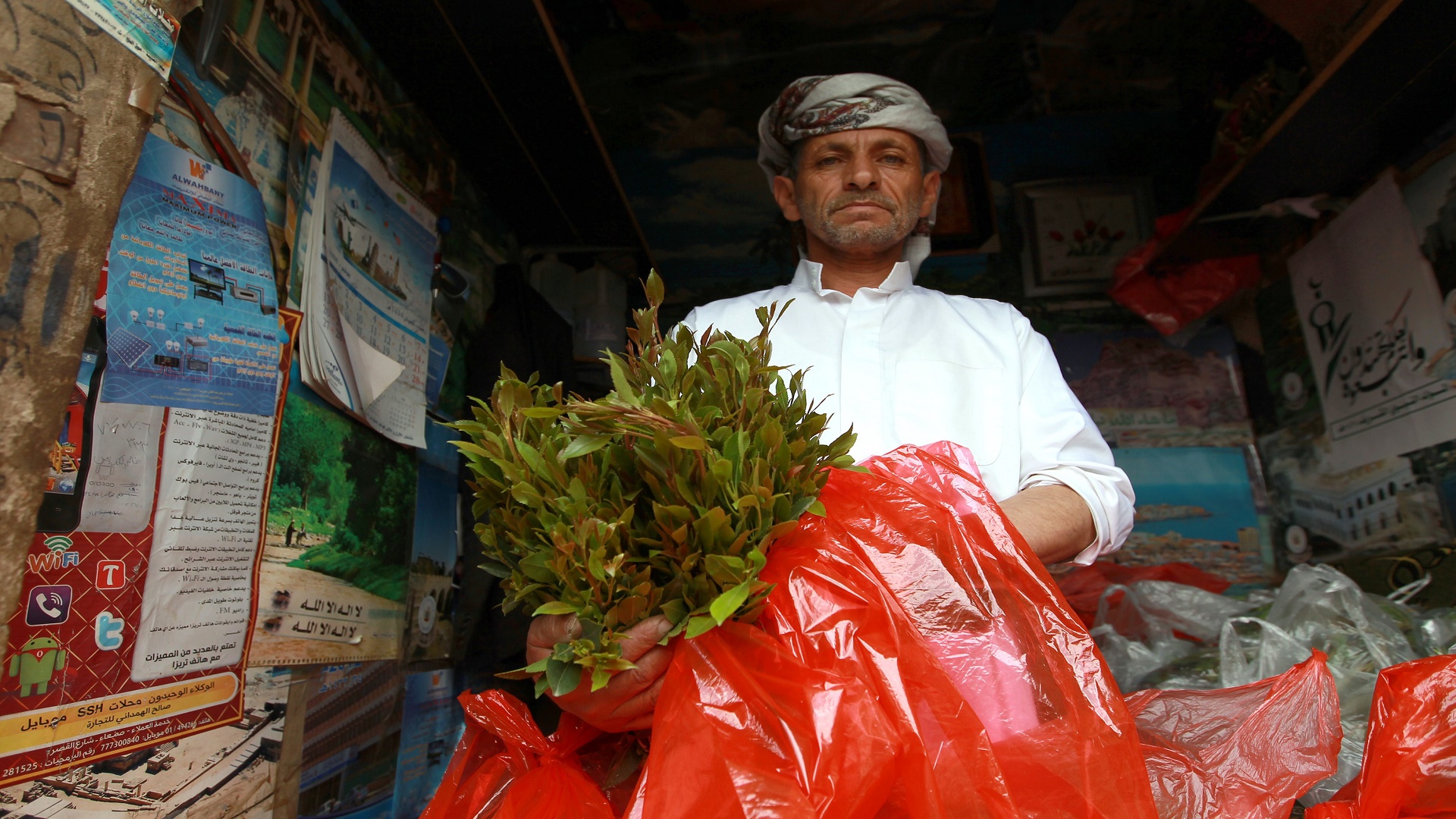Children’s Literature in Yemen: A Rich Heritage Facing Modern Challenges
Sawt Al-Amal (Voice of Hope) – Manal Ameen
The English philosopher John Locke proposed the concept of the “blank slate,” suggesting that humans are born without prior knowledge and that experiences and acquired information shape their personality. Despite this, literary writings aimed at entertaining children only emerged with “A Little Pretty Pocket-Book” by the English writer John Newbery. In the Arab world, the Egyptian writer Kamil Kailani was one of the first to focus on children’s literature with his work “Sinbad the Sailor” in 1927.
Children’s literature is defined as a literary genre encompassing stories, plays, poetry, and essays targeted at children and young people. Its aim is to provide information and facts, enrich vocabulary, reinforce religious, ethical, and national values, and provide entertainment and enjoyment for the child. It also contributes to the formation of a balanced and active personality capable of positive social interaction. Children’s literature differs from adult literature in various aspects, including language, visual elements, and content.
Children’s literature in Yemen saw notable beginnings, most prominently with the works of pioneers Ahmad Sharif Al-Rafa’i and Baba Alawi Al-Saqqaf. Their creations in children’s programs on Aden Radio, such as the famous operetta “Ta’at Al-Um (Tuffaha)” Mother’s Obedience (Apple), left a clear mark on this literary genre. The great poet Lutfi Jafar Aman, through his creative contributions in collaboration with the composer Ahmad bin Ahmad Qasim, added significant momentum to the development of children’s literature.
Aden represents a pioneering model in children’s literature in the Arabian Peninsula. The features of children’s literature in Aden began to emerge in the 1940s and 1950s with works such as Alawi Al-Saqqaf’s “A’alam Al-Tifl” (The Child’s World) program, which featured prominent poetic writings by Ahmad Sharif Al-Rafa’i and Lutfi Jafar Aman, alongside school theater and puppet theater.
In the 1970s and 1980s, initiatives emerged to develop children’s reading culture, including the establishment of public libraries such as “Lake” library in Aden, which allowed children to rent books at nominal prices, in addition to other libraries like Ghulam library and the Abdul-Hamid U’badi library.
The first children’s magazine in Aden, “Madarisna” (Our Schools), appeared in 1948, followed by other magazines such as “Qalam Al-Talib” (Student’s Pen) and “Al-Bara’im” (Buds). Despite their pioneering role, these magazines did not last due to a lack of financial support over time.
There are general characteristics of children’s literature in Yemen, in all its forms (stories, novels, plays, poetry, and essays). These characteristics include representing and reflecting human and Islamic values in the literary material, instilling national spirit through material that addresses place, time, and symbols such as the flag and historical sites, using simple Arabic language, avoiding harsh, difficult, or colloquial words, portraying characters in stories as figures from the child’s immediate environment or fictional characters possessing values from the child’s surroundings rather than those of other societies, and ensuring that the narrative and dialogue are appropriate for the target age group.
Young adult literature, or what is known as “transitional literature,” represents one of the most challenging types of writing due to the overlapping characteristics of the target age group between late childhood and early adolescence. This group is characterized by a transitional phase from childhood to maturity, where the individual begins to form their own opinions and explore their self and social identity. Here, the writer’s skill lies in creating literature for young people that matches their linguistic and intellectual development, addresses issues relevant to their age, and keeps pace with modernity, digital technology, and artificial intelligence.
The Most Difficult Type of Writing
The great writer Dr. Abdul-Aziz Muqalih emphasized the importance and precision of writing for children, pointing out that it is not as easy as some might think. He highlights that writing for children is one of the most difficult types of writing, as it requires a deep understanding of how to enter the world of childhood and grasp the child’s emotions, characterized by innocence, simplicity, and limited attention span.
Dr. Muqalih also explained that the great creators who dedicated part of their work to children were usually those with experience and creative maturity. He cites prominent Arab examples such as poets Ahmad Shawqi and Sulaiman Al-Isa, who contributed to enriching children’s literature.
He also praises the efforts of Dr. Ali Haddad, who made significant contributions to children’s literature, especially through his book “The Hand and the Buds: Studies in Children’s Literature), which is considered one of the most prominent studies that addressed this topic. It is characterized by its in-depth study of literature aimed at children throughout the ages and its analysis of the child’s personality and developmental stages, making it a rich source for specialists and those interested in children’s literature.
This creative movement sparked enthusiasm among writers and artists, such as Hasan and Husain Faqih, Shakib Jumman, and Baba Abdul-Rahman Mut-har, which contributed to creating a competitive atmosphere that led to the production of diverse literary works carrying a noble message targeting children and families alike.
Cultural Movement
Attention to children’s literature in any society is a true indicator of the existence of a general cultural movement aimed at the renaissance and development of society, especially if this attention is qualitative, not quantitative and selective; because the child is the foundation, and thus generations hand over the banner of culture and literature to each other, and each generation begins where the previous generation ended, unlike what we are doing at present: stopping and stagnation, then resuming anew with a gap between past and present generations.
The literary movement directed at children in Yemen in general, and especially at this stage, aims to build an identity and awareness that coincides with the extraordinary circumstances the country is going through; because children’s literature at this stage must have a special character and not be an imitation of global or Arab children’s literature.
Folk Tales
Folk tales and the stories of mothers and grandmothers in the countryside and cities played an important role in instilling noble values in children. These tales included stories of the great, heroism, and myths, such as the Greek tales of Ayod, Kalila, and Dumna. They were presented in a simple and smooth style that is easy for the child to understand, which contributed to enhancing wisdom, self-respect, and courage.
Children’s programs on radio and television also contributed to broadening children’s horizons by presenting stories such as Cinderella and famous Yemeni stories like Henna Leaf, and stories of heroism and legends containing educational messages about social values and life concepts.
With attempts to revive the activities of some previous writers, the magazine (The Little Hero) was issued in November 2022 in Aden, published by the Union of Southern Writers, which gave a glimmer of hope towards a literary movement directed at children, with the participation of writers and artists specializing in children’s literature.
Current Challenges
In the last two decades, children’s literature in Yemen has declined significantly, and many writers have refrained from producing children’s literature due to the lack of government support, the absence of specialized publishing houses, and the fact that it is not financially profitable. The shift of many organizations towards humanitarian relief has also led to the neglect of cultural activities, specifically those related to children.
Most government schools lack libraries dedicated to children, depriving them of essential sources of knowledge. In addition, the internet and modern technology have become a strong competitor to books, with children spending most of their time in front of screens without guidance or supervision.
Despite the challenges, there are still community initiatives calling for promoting the production of children’s books, by supporting writers and publishing houses to provide content suitable for children at reasonable prices, establishing school libraries to be a source of knowledge and entertainment, working together to revive magazines by supporting them financially, focusing on educational and engaging content, and continuing to encourage children to read and develop their intellectual skills, and directing the use of the internet in a way that supports culture and education.
Rabee’s Story: A Passion for Reading Amidst Life’s Challenges
Sawt Al-Amal (Voice of Hope) – Ahmed Bajoaim Reading is a fundamental tool for self-…





